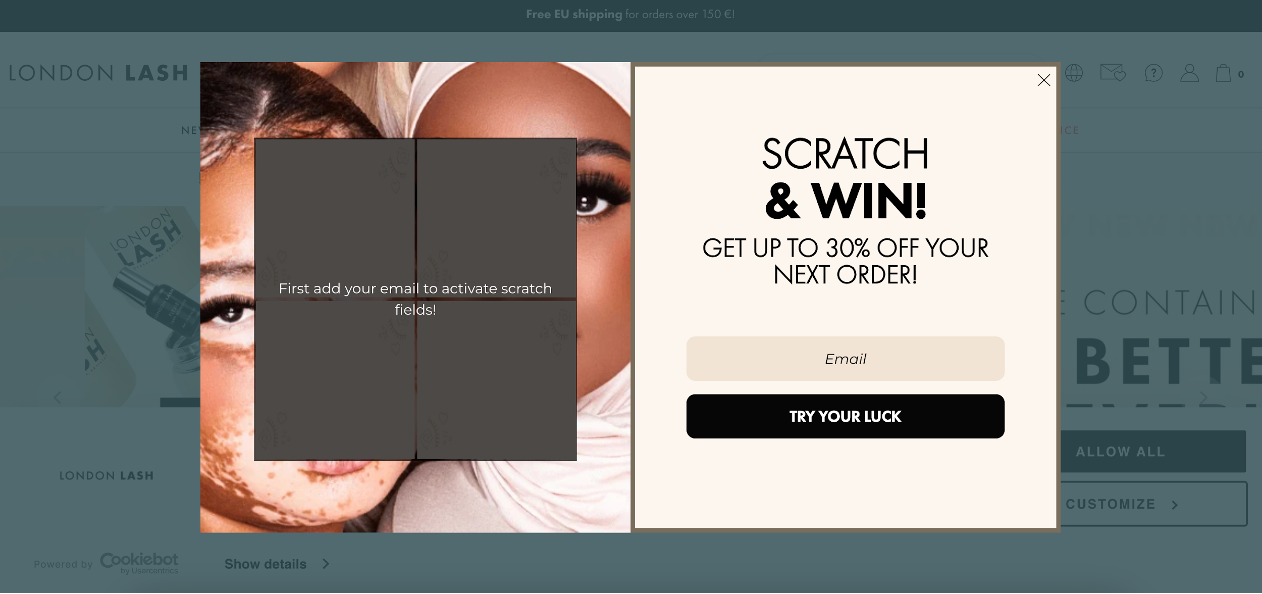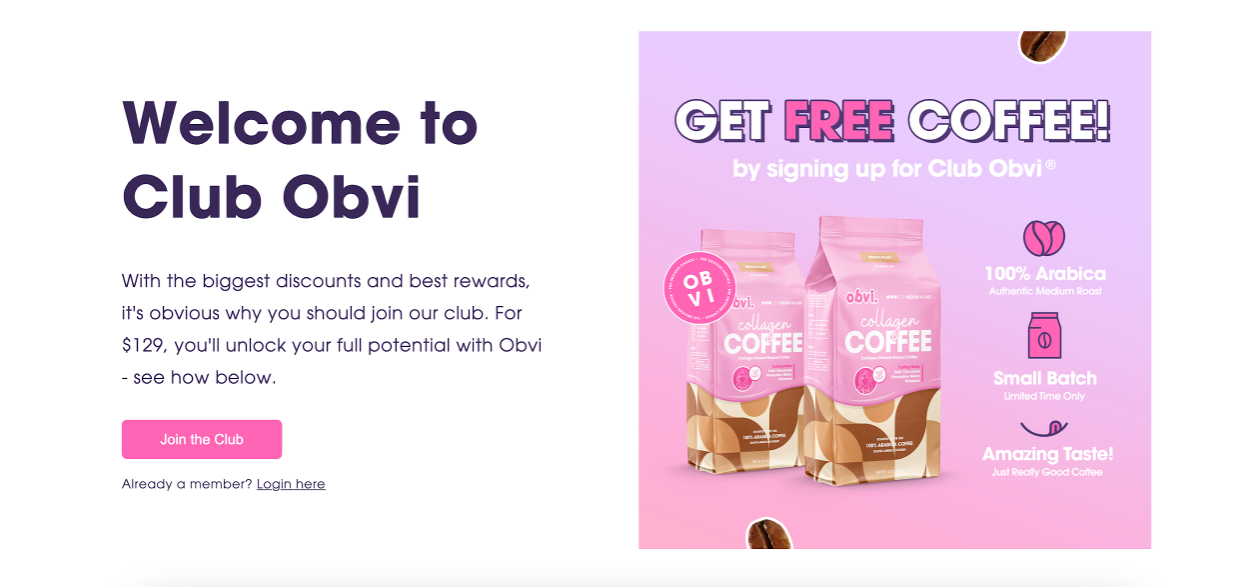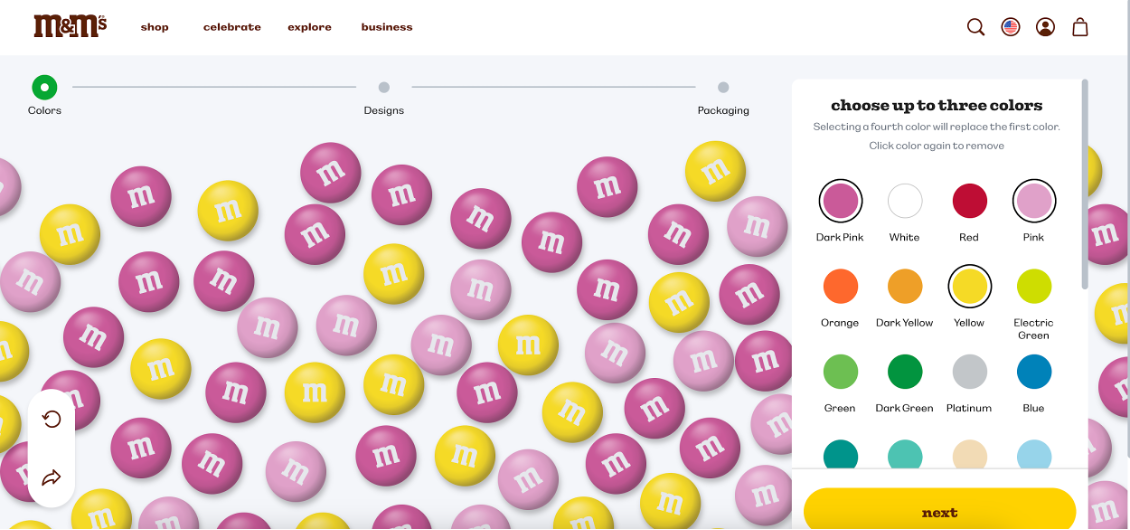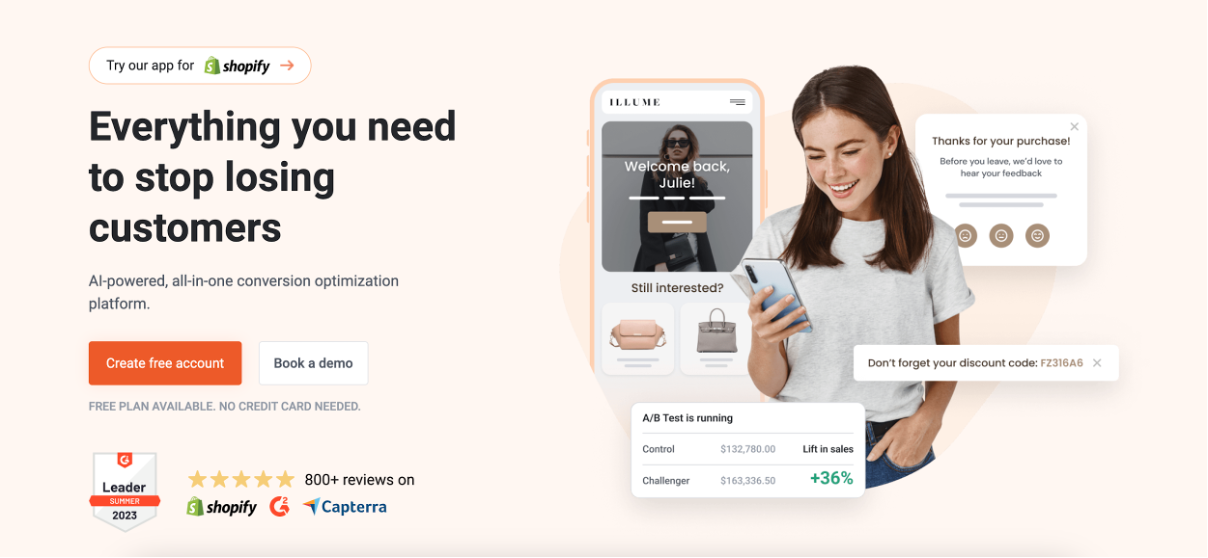- Blog
- Ecommerce Gamification: What Is It and How to Use It In Your Online Store Successfully?
Ecommerce Gamification: What Is It and How to Use It In Your Online Store Successfully?
-
Nikolett Lorincz
- Ecommerce
- 6 min read
Table of Contents
If you have an online store and want to encourage customers to sign up for your email list or boost ecommerce sales, gamification marketing can be a great way to engage customers and create a sense of fun.
In the virtual world, it can be a challenge to create a customer experience that leads to consistent user engagement. That’s where a gamification strategy comes into play: your customers will be excited to engage with the game elements on your site!
In this article, we’ll reveal why so many ecommerce websites use gamification techniques as part of their marketing strategy. We’ll also bring you 10 great ecommerce gamification examples that you can use as inspiration for your ecommerce store.
What is ecommerce gamification?
Ecommerce gamification refers to the strategic integration of game-like elements and mechanics into online shopping platforms. When you use gamification on an ecommerce site, you’re creating an engaging, interactive shopping experience for your visitors.
You can use many different gaming elements to boost user engagement, like using a spin-the-wheel concept, implementing a points system that rewards customers for specific actions, or using badges to motivate and entertain users.
By infusing elements of fun and competition into the sales process, gamification strategies tap into basic human psychology, fostering a sense of accomplishment and excitement that encourages users to spend more time on the website, explore products, and make purchases.
It also helps to forge stronger connections between customers and brands, helping to improve customer loyalty.
What are the benefits of implementing gamification?
Let’s take a closer look at five benefits of using gamification elements on your ecommerce website.
1. Increased customer engagement
As discussed, online stores often use gamification to increase customer engagement by injecting an element of excitement and interactivity into the shopping experience. You can captivate your customers by allowing them to play games and have fun.
This heightened engagement results in extended time spent on your site and encourages users to explore various offerings and discover new products.
2. Improved customer loyalty and retention
Gamification fosters a deeper connection between customers and brands. Consistently delivering enjoyable experiences is a great way to reward your loyal customers.
You can also make gamification a part of your loyalty programs by recognizing customer achievements with loyalty points, badges, or a progress bar.
The desire to maintain progress and earn rewards encourages repeat visits, creating stronger customer relationships.
3. Enhanced data collection and customer insights
Gamification strategies can also be used to collect data from customers, like their name, email address, preferences, interests, behaviors, and habits. Using this data, you can segment your customers, personalize messages, and gain a better understanding of what motivates your audience.
When you engage customers using gamification techniques, collecting customer feedback becomes easier, since your visitors will be more eager to participate.
4. Boost in sales and revenue
Gamification also has a direct impact on sales and revenue generation. As we’ve explored above, when customers are engaged and spend more time on ecommerce websites, the likelihood that they’ll make a purchase increases.
Moreover, strategically designed gamification can entice users to make a purchase by delivering discount codes and coupons in a fun way.
Working with a mobile user acquisition consultant who specializes in gamification can be a very cost-effective investment to improve the ROI of an ecommerce site.
5. A more unique brand identity
Gamified experiences that align with a brand’s values and tone can make a lasting impression on customers.
The ability to play games on your site will really help customers remember your brand. Not only will you be able to engage users and collect their data, you’ll also set your business apart from competitors.
Common gamification techniques
There are several effective gamification techniques that brands use to drive customer interaction and retention—each offering unique ways to make the shopping experience more fun and rewarding.
1. Quizzes
Quizzes are often used for ecommerce gamification as they are ideal for personalized product recommendations. Customers answer different questions, on a particular topic, or there are personality type of quizzes like Find the best solution to your skincare problem.
It can boost engagement and provide valuable insights into customer preferences and gain some first party data.
2. Win a gift
Win a gift is also a great way to engage your customers, you often see them as lucky wheels. Shoppers spin a virtual wheel to win incentives, like a percentage off a purchase, depending on where the wheel stops.
3. Challenges
Who doesnt love challenges? This can be part of your reward system.
An early bird challenge, for example, might offer a free gift to the first 100 customers who purchase a product, and a referral challenge might provide discount codes to customers who refer three friends in one week.
4. Loyalty programs
Customers earn points and ‘level up’ by progressing through tiers. Doing so unlocks rewards such as discounts. This encourages customer loyalty and repeat purchases.
Many loyalty programs also use game-like user interfaces and elements like customer achievement levels, badges, and progress visualizations.
10 real-world examples of ecommerce gamification
Now let’s take a look at some examples of how top online stores have used the tactic to generate more sales, improve their loyalty programs, and gain more repeat customers.
1. London Lash’s scratchcard

London Lash uses a scratchcard format to encourage users to sign up for their email list. When users enter in their email, they get the chance to reveal their prize.
2. MotionGrey’s spin the wheel

Engaging customers is easy if you have a spin-to-win popup like MotionGrey. By giving potential customers the chance to win a discount in exchange for their email address, the brand is able to boost both their sales and their lead generation efforts.
3. Allyoung’s pick a gift popup

Allyoung successfully implemented an alternative to the scratchcard concept with this pick-a-gift popup, which adds a fun, celebratory tone to their site.
4. K18 Hair’s virtual experience

In one of the most innovative gamification examples on this list, K18 Hair created a fun user interface to help their customers learn about the science of hair.
5. Bubble Skincare’s quiz

Bubble Skincare uses a fun quiz funnel to help their users learn what type of skin care products will be ideal for them. This type of marketing strategy can help boost ecommerce sales by helping new customers quickly find the best products for them.
6. Sephora’s rewards bazaar

You can also use a gamification strategy to enhance your seasonal or limited-time promotions, like Sephora has done here.
7. Obvi’s club

Obvi’s loyalty program uses game mechanics in addition to their free coffee offer to convince users to join their club.
8. Crown & Paw’s segmentation popup

Crown & Paw uses a gamified segmentation popup to collect customer data and provide personalized product recommendations based on the user’s answer to a few simple questions.
After asking for each user’s email address (using a 10% off coupon as an incentive), they show the following pages:



9. M&M’s product configurator

M&M provides a unique customer experience for their users by allowing them to create their own combinations of colors with a fun interface.
10. Blume’s loyalty program

Blume’s loyalty program uses a unique “questing” format to convince their users to make more repeat purchases over time by giving them an opportunity to earn points and rewards for taking specific actions.
3 gamification tools you can use to increase customer loyalty
If you want to implement a gamification strategy on your online store, you’re going to need a tool to help you do it.
Here are three great options that will allow you to use gamification marketing to convert new customers into loyal brand ambassadors.
1. OptiMonk

OptiMonk is an all-in-one CRO toolset that provides gamification, popups, website personalization, and A/B testing. It was built for ecommerce marketers and agencies looking for quick, affordable solutions to boost the performance of their campaigns and landing pages.
Here are some game mechanics you’ll get access to with OptiMonk:
Key feature #1: Lucky wheel
A lucky wheel is a fun way to collect email newsletter subscribers. You give your visitors the chance to try their luck and win one of several different discounts or incentives.
And visitors need to provide their email addresses and agree to receive email communications to spin the wheel, upping the odds that they’ll become subscribers!
Key feature #2: Scratchcard
Scratchcards hide prizes behind an opaque layer that has to be “scratched” in order to reveal the prize (in our case a coupon code). This type of gamified campaign can also help collect email subscribers.
Key feature #3: Pick-a-gift popup
Pick-a-gift popups are yet another great way to collect more newsletter subscribers and build a better email list. It’s simple, but fun: visitors get to pick a gift after they provide their email addresses.
These campaigns can provide excellent support for your seasonal promotions.
Key feature #4: Shopping quiz
Shopping quiz popups don’t just collect subscribers, they also bring in valuable customer data. Engaging your visitors with warm-up questions can increase engagement and boost subscriptions by up to 100%.
Other key benefits:
- Access to a huge template library: 300+ beautiful pre-built, mobile-friendly templates at no additional cost.
- An easy-to-use drag & drop builder: Creating unique popups and embedded campaigns has never been easier.
- 30+ intelligent targeting features and triggering options: Use URL targeting, targeting based on cart value or products added to cart, targeting based on traffic source, and much more.
- Ecommerce-specific features: From a great countdown timer to auto-generated coupon codes and WordPress-specific targeting options.
- Custom input fields: Go beyond the standard first name and email address, collecting any data you need.
- Google, AdBlock & GDPR safe: OptiMonk campaigns are fully GDPR compliant and Google friendly, so you and your customers are safe and secure.
- Detailed analytics & insights: Get in-depth insights into how your campaigns are performing (and why) based on user behavior.
- A/B testing: Test alternative versions of your messages to find out which have the best conversion rate.
- Smart Headline Generator: Have our AI-powered Smart Headline Generator come up with catchy headlines.
- 30+ email, CMS, and ecommerce integrations: Including popular solutions like MailChimp, Klaviyo, and HubSpot. You can automatically send all the lead data you collect for more targeted email marketing.
2. Qualifio

Qualifio enables large brands and media to engage their target audience across several digital channels with over 50 interactive formats. This includes quizzes, contests, surveys, tests, animated games, and many others.
3. CustomerGlu

CustomerGlu is a gamification platform designed to help you create rich in-app experiences that drive customer engagement and retention. With over 50 pre-built templates and the ability to create your own from scratch, you can easily solve any retention or engagement problem you might be facing.
FAQ
Can I use gamification on mobile?
Absolutely. Most gamified tools are mobile-optimized, ensuring the experience works smoothly on any device.
Does gamification actually increase sales?
Yes. Brands that implement gamified popups and experiences often see higher conversion rates, more returning customers, and increased average order value.
Is ecommerce gamification only for younger audiences?
Not at all. While younger shoppers might be more familiar with gaming interfaces, well-designed gamification appeals to all age groups—as long as the value is clear and the experience is intuitive.
Wrapping up
As you’ve seen, gamified marketing campaigns are a great way for ecommerce businesses to engage customers, whether that’s through a fun personality quiz, a spin-the-wheel popup, or a points system for your loyal customers.
There’s no reason not to start using gamification to boost sales, customer engagement, and customer loyalty today!
If you think it’s time to make online shopping fun, sign up for a free OptiMonk account today.
Migration has never been easier
We made switching a no-brainer with our free, white-glove onboarding service so you can get started in the blink of an eye.

What should you do next?
Thanks for reading till the end. Here are 4 ways we can help you grow your business:
Boost conversions with proven use cases
Explore our Use Case Library, filled with actionable personalization examples and step-by-step guides to unlock your website's full potential. Check out Use Case Library
Create a free OptiMonk account
Create a free OptiMonk account and easily get started with popups and conversion rate optimization. Get OptiMonk free
Get advice from a CRO expert
Schedule a personalized discovery call with one of our experts to explore how OptiMonk can help you grow your business. Book a demo
Join our weekly newsletter
Real CRO insights & marketing tips. No fluff. Straight to your inbox. Subscribe now
Nikolett Lorincz
- Posted in
- Ecommerce
Partner with us
- © OptiMonk. All rights reserved!
- Terms of Use
- Privacy Policy
- Cookie Policy
Product updates: January Release 2025








